What are Stones?
Stones are made up of two or more minerals that make up rocks, which make up the earth’s crust and have no specific shape or chemical composition. In regions where it is naturally accessible, stones are one of the most significant building materials in stone masonry civil engineering. The stones used in building construction should be strong, robust, and tough, with no weathered soft spots of material, fractures, or other faults that would reduce their strength and longevity. Quarrying from large solid rocks is used to obtain stones for construction.
Uses of Stones:
Stones are used in various applications in construction, such as:
- Masonry, comprising pillars, swags, entrances, and decorative embellishments.
- Tiles and cladding for the floor and walls.
- Surrounds for fires, stairwells, and other decorative components
- Aggregate.
- Ballast.
- Concrete, mortar, cement, asphalt, and some bricks contain it.
- Paving.
- Roofing materials.
- Work surfaces and tabletops in the kitchen.
- Countertops, shower trays, and basins for the bathroom.
Different Types Of Stones used in the Construction are as follows:
1. Basalt and Trap:
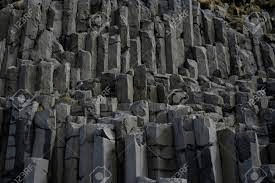
Fig 1: Basalt and Trap
Courtesy: 123rf.com
Basalt, sometimes known as white, green, or blue basalt, is igneous rock. This stone is good and bad for construction because it is strong and rough. This roughness makes it difficult to use the granite for any purpose. It has a specific gravity of about 3 and compressive strength of 200 to 350 N/mm2 (2039 to 3569 kg/cm2). It is nearly ten times more than M-20 or M-25 grade concrete, commonly utilized. They’re utilized in foundations, highways, and rubble masonry, among other things. Pavements, railway ballast, doorsills, and steps are all made of these types of stones.
2. Granite:
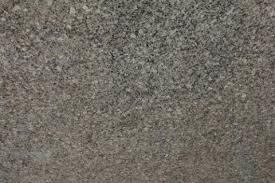
Fig 2: Granite
Courtesy: theroots.in
Granite is one of the most commonly utilized building stones. Even though granite is no longer the most often used building stone, it remains popular due to its hardness and durability. It’s a crystalline igneous rock with fine to coarse grain found deep down. This stone is incredibly valuable due to its crushing strength. It can also withstand harsh weather conditions.
Granite stones are usually cut into slabs and then polished. It can be used for stone facing slabs and floor slabs. The issue with granite is that stone has low fire resistance. It is, however, suitable for building since it can withstand acidic liquids like curds, vinegar, and lime juice. As a result, granite is a good choice for kitchen countertops.
3. Marble:
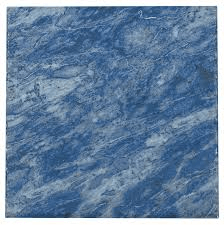
Fig 3: Marble
Courtesy: nptpool.com
Marble is a natural stone, which means it has undergone physical and chemical changes due to extreme heat and pressure over time. Marble begins as limestone, a soft stone mostly composed of calcite. This limestone recrystallizes under the heat and pressure of magma or tectonic plates, changing the structure of the rock and causing the calcite crystals to grow and interlock. Marble can be found worldwide, from Macedonia to Vermont, but the most well-known variations originate from Italy and Greece, where the color is often the clearest.
It’s useful in columns, flooring, and facing and ornamental work steps. Marble’s compressive strength ranges from 70 to 75 MPa. Marble stones are tough, have a consistent texture, are less porous, and polish well. In addition, it’s simple to cut and carve into various shapes. Marble comes in a variety of colors, including white and pink.
4. Laterite:
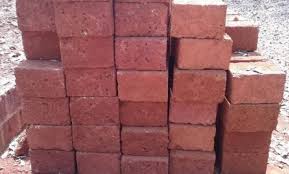
Fig 4: Laterite
Courtesy: exportersindia.com
It’s a type of metamorphic rock. Its structure is porous and sponge-like. It has a high concentration of iron oxide. It might be brownish, red, yellow, brown, or grey. The specific gravity of this material is 1.85, and the compressive strength ranges from 1.9 to 2.3 N/mm2. It’s easy to quarry in blocks. It increases strength as it ages. Its outside surface should be plastered when utilized as a construction stone.
5. Quartzite:
Quartzite, another metamorphic stone, is formed when sandstone is subjected to high temperatures and pressures. This stone’s granular texture and crystalline structure are its most distinguishing features. Unfortunately, quartzite is brittle and hard, making it difficult to work with.
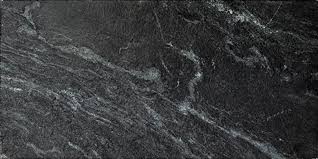
Fig 5: Quartzite
Courtesy: katelotile.com
Quartzite has a crushing strength of roughly 115 MPa. Quartzite comes in various colours, including grey, white, and yellowish. This stone is thick and has good resistance to chemical weathering, making it excellent for culinary use.
6. Gneiss:

Fig 6: Gneiss
Courtesy: stoneadd.com
Gneiss is a common stone found on the Earth’s surface. The minerals are organized into layers that appear as bands in the cross-section. Minerals like magnesium and iron are found in the darker bands, while silicate minerals are in the lighter bands (aluminium, sodium, potassium, etc.). Gneiss and granite have similar attributes (resistance, hardness, and durability), but their textures and finishes are distinct. This stone’s foliated texture blends light and dark materials. The hues vary, with lighter and darker discontinuous bands alternating (white, pink or grey).
It has a specific gravity of 2.69 and a compressive strength of 200 to 250 N/mm2 (2039 to 2549kg/cm2). These stones are commonly used in street pavement and rough stone masonry. They’re also employed in construction projects, including docks, breakwaters,lighthouses, and piers.
7. Limestone:
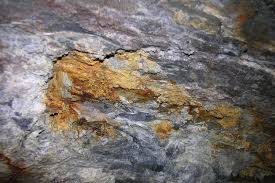
Fig 7: limestone
Courtesy: britannica.com
Limestone is a sedimentary rock created by the deposition of particles by weathering. Calcium carbonate makes up the majority of this stone. It makes it a soft rock compared to the others in this category, suitable for various construction projects.
The compressive strength of this stone is roughly 55 MPa. It’s frequently combined with alumina and silica, as well as magnesia. It becomes magnesian when the magnesia content reaches 10% or more. The Dolomites are limestone with a magnesia content of greater than 45 percent.
8. Sandstone:
Since these rocks are sedimentary, they are stratified. Quartz and feldspar make up the majority of them. They come in various colors, including white, grey, red, buff, brown, yellow, and dark grey. The specific gravity ranges between 1.85 and 2.7, and the compressive strength is between 20 and 170 N/mm2. It has a porosity range of 5% to 25%. The weathering of rocks makes them unfit for construction. If heavy buildings are required, it is preferable to use sandstones with silica cement. They’re utilized for dams, bridge piers, and river walls, among other things.
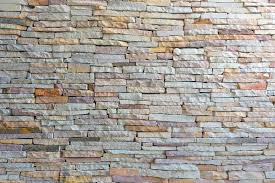
Fig 8: Sandstone
Courtesy: thoughtco.com
9. Slate Stone:
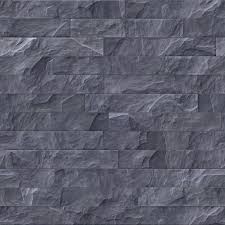
Fig 9: Slate Stone
Courtesy: myfreetextures.com
Slate is a metamorphic rock generated when shale undergoes a low-heat, low-pressure metamorphic process. Mica, clay, and quartz minerals make up most of the material. Slate is brittle and unyielding, with a fine-grained, foliated structure.
The most common hue for this stone is black, but it can also come in greenish-grey, grey, or purplish-grey. Slate may be easily divided into slabs since it is foliated. Follow the natural planes of the rock to do so. Its compressive strength ranges between 75 and 210 MPa.
10. Travertine:
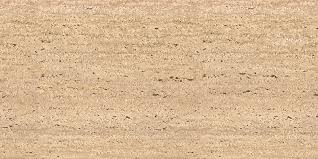
Fig 10: Travertine
Courtesy: dedalostone.com
Travertine is a sedimentary rock commonly found in both cold and hot mineral springs. The stone can also be found in limestone caverns as a natural occurrence. It’s a sort of limestone generated when water dissolves deposits and leaves behind calcite and aragonite. It’s among several natural stones used to pave patios, garden walks, and courtyards. In addition, travertine has been used to construct several temples, monuments, and bath complexes. The stone’s surface has pitted pits and troughs, indicating that it has a porous surface and concentric structure. It comes in several colors, from grey to coral-red and polished to a smooth, lustrous finish.
Conclusion:
For thousands of years, stones have been employed as a building material. It’s been known for a long time as a material of exceptional creative quality and long-term durability. Stones are employed as both a structural material and a decorative element. Each stone has its unique characteristics. Giza’s pyramids, India’s ancient temples, Malta’s temples, and the UK’s burial chambers were all made from stone over 4000 years ago and are still standing. As a result, they have a predicted life expectancy of 500 to 5000 years or even more.
References:
1. 10 Types Of Stones Used for Building Constructions – The Constructor. (2019, November 2). The Constructor. https://theconstructor.org/building/stones-building-constructions/36144/.
2. Types Of Stone. (n.d.). Types of stone – Designing Buildings. https://www.designingbuildings.co.uk/wiki/Types_of_stone.
3. Common Types Of Stones Used In Construction. (2016, April 17). Construction | Construction Industry News. https://constructionheadline.com/type-stone-construction/.
4. 11 Types of Stones Used In Construction – BuilderSpace. (2021, January 4). BuilderSpace. https://www.builderspace.com/types-of-stones-used-in-construction.
5. Minerals, Rocks and Stones Used In Building Construction In Civil Engineering. (2016, February 26). Minerals, Rocks and Stones used in Building Construction in Civil Engineering. https://www.aboutcivil.org/background-info-for-stones.html.
If you have a query, you can ask a question here.


